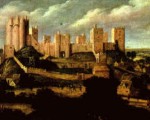
On this day in history events for week 19-25 October.
[Read More...]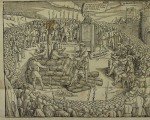
he burnings of two of the Oxford martyrs: Hugh Latimer, Bishop of Worcester, and Nicholas Ridley, Bishop of London took place on this day in 1555, in the reign of the Catholic Mary I. The two men, along with Thomas Cranmer, who was burnt at the stake on the 21st March 1556, are known as the Oxford Martyrs and their lives and deaths are commemorated in Oxford by Martyrs’ Memorial, a stone monument just outside Balliol College and near to the execution site, which was completed in 1843. A cross of stones set into the road in Broad Street marks the site of their burnings.
[Read More...]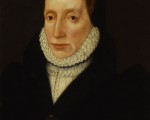
Lady Margaret Douglas, Countess of Lennox, was born on 8th October 1515. Margaret was the daughter of Margaret Tudor, Queen Dowager of Scotland and sister of Henry VIII, and Archibald Douglas, 6th Earl of Angus. She was born at Harbottle Castle in Northumberland, home of Thomas, 2nd Lord Dacre, because her mother went into labour as she fled Scotland to go to Henry VIII’s court in London. Margaret was baptised on 9th October, but her mother was ill after the birth and wasn’t well enough to travel onward to London until spring 1516. Mother and baby stayed in England until June 1517, when Henry VIII sent his sister and niece back to Scotland.
[Read More...]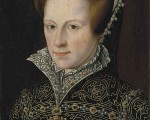
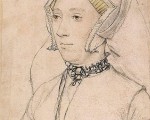
Born on the 22nd March 1519, Katherine Willoughby was the daughter of William, 11th Baron Willoughby, and his wife Maria De Salinis, one of Queen Katherine of Aragon’s ladies. When Katherine was just seven years old. her father died and with no male son surviving Katherine was his heir. In March 1528 Charles Brandon bought the wardship of Katherine from the King for a staggering £2,266 13s 4d with the intention of marrying Katherine to his son Henry. Katherine then came to live with the Brandons to be raised.
Charles Brandon’s third wife, Mary Tudor, Queen of France, died between seven and eight o’clock in the morning on the 25th June 1533. Her funeral was held on the 20th July 1533 at Bury St Edmunds. Katherine attended the funeral and she and her mother brought forward palls of cloth of gold to the altar.
[Read More...]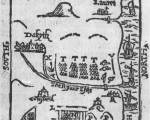
The Battle of Pinkie Cleugh, also known as the Battle of Pinkie, took place near Musselburgh, in Scotland, on the banks of the River Esk, on 10th September 1547. It was a battle of the “War of the Rough Wooing”, so called because it started when Henry VIII tried to force Scotland to agree to a marriage between his son Edward and the infant Mary, Queen of Scots.
[Read More...]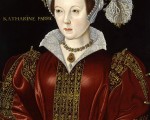
Catherine was born in 1512, most likely in London or Buckinghamshire. Her parents were Sir Thomas Parr, a favourite of King Henry VIII during his early reign, and Maud Parr, who served as a lady-in-waiting to Henry VIII’s first wife Katherine of Aragon. It is believed that Catherine was named after the Queen. Catherine had a younger brother named William, born in 1513 and a younger sister named Anne born in 1515.
[Read More...]
Historian Gareth Russell is the editor of our monthly Tudor Life magazine and he’s been working hard on scheduling expert articles and also expert talks for the next few months. We are thrilled to bits that so many historians and authors want to be involved in the Tudor Society by offering their knowledge and expertise to our members – a big thank you to them and to all our members too for your continued support.
Contributors to Tudor Life magazine in the coming months include:
[Read More...]
Here’s the August 2015 magazine with all our regular items and contributors plus lots of fascinating articles. This month we have a “Coronation Special” section with articles from a number of eminent historians….
[Read More...]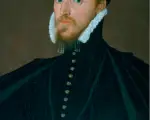
On 4th February 1520, Mary Boleyn married William Carey, a young, handsome, athletic man who a member of the King Henry VIII's household and also a distant cousin of the King. The match was well made, as Mary Boleyn's father, Sir Thomas Boleyn, was on the rise and was making a name for himself at court. The wedding took place at Greenwich and Henry VIII himself was present, giving the newly married couple a gift of 6s 8d.
Mary would go on to give her husband two healthy children. Mary's first child, a daughter named Catherine, quite possibly named after Queen Catherine of Aragon, was born in 1524. Catherine would become a constant figure at court until her death on 15 January 1569. At the age of just fourteen, she was appointed as a maid of honour to Anne of Cleves, Henry VIII's fourth wife. Then, on 26 April 1540, Catherine married Sir Francis Knollys and she went on to give her husband thirteen children! After the deaths of Henry VIII and his son and heir Edward VI, the Catholic Mary I came to the throne. As Protestants, Catherine and Francis feared for their safety and fled the country with their youngest children. Catherine and her family spent several years travelling the Low Countries, where Catherine was to give birth to one of her children.
Upon Mary I's death, Elizabeth I came to the throne and in 1559 Catherine was appointed as a lady of the Queen's bedchamber. Returning to England, Catherine took up this highly prized position. Her status meant that she was to tend to the Queen's personal needs, sleep at the foot of her bed when required and help dress the Queen, among other duties. It was a position of intimacy and one which Elizabeth I came to cherish.
Tragically, Catherine died on 15 January 1569 at Hampton Court. Queen Elizabeth I is reported to have been grief-stricken and she gave her beloved cousin a lavish burial at Westminster Abbey which cost £640 2s. 11d.
Mary Boleyn's second child, a son named Henry, was born on 4 March 1526. He too would become a prominent and impressive member at court throughout his life. In May 1545 he married Anne Morgan and the pair had twelve children together, nine of them sons. During his early years, he became a diplomat and a member of parliament. When Elizabeth I came to the throne, Henry was knighted and on the 13 January 1559 he was created Baron Hunsdon and granted substantial lands and a yearly pension of £4000. On 31 October 1560 Henry was appointed as Master of the Queen's hawks and then on 18 May 1561 he was created a Knight of the Garter.
Henry Carey played a prominent role over the years helping to protect the North from England's Scottish neighbours. On 23 October 1571, he was appointed warden of the east marshes, which afforded him even greater responsibilities in protecting the north of England. On the 16 November 1577, Henry was appointed as a member of the Privy Council, allowing him greater access not only to the Queen but to the administration of England's policies.
During 1583, Elizabeth I re-appointed Henry as captain of the gentlemen pensioners and in July 1585 he was appointed as Lord Chamberlain of the Household, as well as continuing his privy councillor duties. Henry was active in political life until his death on 23 July 1596 at Somerset House. Just like his sister Catherine, Henry Carey was buried at Westminster Abbey, the expenses of this paid by his cousin Elizabeth I. It is rumoured that on his deathbed Elizabeth I offered Henry the earldom of Wiltshire, a title held by his grandfather Thomas Boleyn. However, Henry refused the title stating that if Elizabeth did not think him worthy of the title while he was alive he would not accept it now that he was dying.
Elizabeth I died childless in 1603 and it was through Catherine and Henry's children that the Boleyn bloodline continued.
Sarah Bryson is the author of Mary Boleyn: In a Nutshell. She is a researcher, writer and educator who has a Bachelor of Early Childhood Education with Honours and currently works with children with disabilities. Sarah is passionate about Tudor history and has a deep interest in Mary Boleyn, Anne Boleyn, the reign of Henry VIII and the people of his court. Visiting England in 2009 furthered her passion and when she returned home she started a website, queentohistory.com, and Facebook page about Tudor history. Sarah lives in Australia, enjoys reading, writing, Tudor costume enactment and wishes to return to England one day.
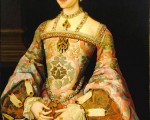
We tend to think of her as the woman who comes from nowhere, she’s not. In many ways she’s the most interesting, the most exciting, the best educated, and the cleverest of Henry’s wives. -David Starkey
Katherine Parr has been remembered through history as King Henry VIII’s sixth and final wife. The fortunate wife that survived. She has been labelled as merely Henry’s nurse, tending to the sickly king’s infirmities. Essentially, she is believed to be little more than Henry’s companion in his final years, with no great achievements of her own. She is often viewed as a wife of lesser importance, in contrast to the hugely popular Anne Boleyn whose legacy has been carried through centuries of intrigue and fame. This article intends to demystify the myths associated with Katherine Parr’s turbulent life, thus to reveal a more realistic view of a women who was well read, deeply religious and ultimately important during her time.
[Read More...]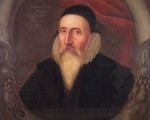
John Dee, astrologer, mathematician, alchemist, antiquary, spy, philosopher, geographer and adviser to Elizabeth I and various influential statesmen during her reign, was born in London on 13th July 1527.
[Read More...]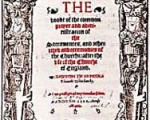
Thank you to Beth von Staats for joining us here on the Tudor Society today as part of her book tour for Thomas Cranmer: In a Nutshell. She is here to share an excellent article on Thomas Cranmer and the Book of Common Prayer – thanks Beth!
MadeGlobal Publishing is offering one copy of the paperback version of Thomas Cranmer: In a Nutshell as a prize for one lucky commenter. All you have to do to enter the giveaway is to comment below saying what you find so fascinating about Thomas Cranmer. You need to leave your comment by midnight (UK time) on Wednesday 15th July. The winner will be picked at random and contacted for his/her postal address. The giveaway is open internationally.
[Read More...]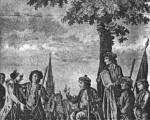
8th July 1549 was the beginning of Kett’s Rebellion. Robert Kett, a Norfolk farmer, agreed to lead a group of protesters who were angry with the enclosure of common land. The protesters marched on Norwich, and by the time they reached the city walls, it is said that they numbered around 16,000.
[Read More...]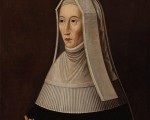
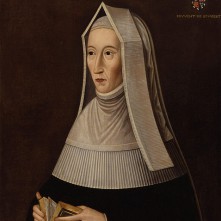
Lady Margaret Beaufort